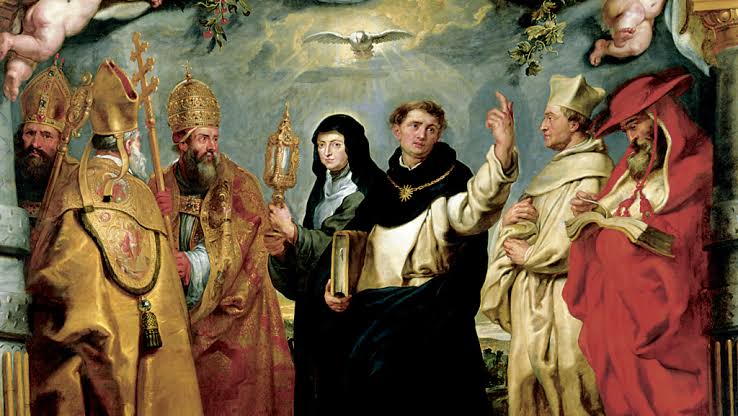St. Augustine wrote down the first manual on learning to preach in book 4 of De Doctrina (On Christian Doctrine). This book was seminal and influenced the preaching style of his time down to even the present age. But before Augustine wrote down the first manual, there was already an existing pattern developed through the New Testament that existed in various forms through voices such as that of John the Baptist, Jesus Christ and the early apostles. The first-century church fathers to the fourth-century fathers developed particular styles also in line with the issues being faced. The reformers, the Puritans and the 19th and 20th-century preachers, missionaries and theologians also developed distinctive styles that mirrored the times they lived in. In this article, we will delve into the history of preaching and compare and contrast key preaching styles from preachers — Teacher Preachers, Herald Preachers, Inductive Preachers and Narrative Preachers — we will see how preachers from the New Testament era to the modern era have employed these key preaching styles to pass the message of the Kingdom.
New Testament
“Repent, for the kingdom of God is at hand!” gives an introduction to the first form of preaching in the New Testament — Herald Preaching. Herald preachers have a defining emphasis on God’s empowering of both Scripture and the preaching event itself. John the Baptist drawing from Isaiah, illustrates this form of preaching that was carried on by Jesus (Matthew 4:17) and often employed by the apostles. Closely accompanied by the message heralded were both teachings and narratives as seen in Jesus’ parables and the various messages we see in the book of Acts. Teacher preachers have a defining belief that hearers should understand Scripture. Peter explained the outpouring of the Spirit in Acts 2 from the book of Joel and took them through scripture explaining that Jesus is the Christ. Teacher preachers stay close to the text and explain its meaning deductively. These forms of preaching styles marked the New Testament church mostly, leading to the explosive growth of the church.
Ancient and Classical Period
In ancient Greece and Rome, preaching often took the form of persuasive oratory. Speakers, like the famous Greek philosophers, used rhetorical devices and techniques to engage and persuade their audience. Due to the influence of the church’s founding fathers, both teacher and herald preachers had consciously adopted rhetorical concepts by the third and fourth centuries. This included the use of forensic discourse, which has an introduction, a list of arguments, and a brief conclusion. This has had a long-term impact. Figures such as Chrysostom (337-407) of Constantinople and Augustine (354-430) of Hippo were influential in establishing this form of preaching style. Augustine saw value in pagan insights to speaking well: “Why should those who speak truth do so as if they are stupid, dull, and half-asleep?”
Inductive Preaching — the belief that hearers’ needs are most important and that preaching must be relevant to them — also took root in this period because of the need to confront heresies.
Medieval Periods
During this period, preaching became more formalized and integrated into religious rituals. Sermons were often delivered as part of the church service and followed a liturgical structure. The preacher would typically begin with a greeting or invocation, followed by a reading from Scripture. This would be followed by an exegesis or explanation of the passage, providing moral or theological instruction. The sermon would then conclude with a prayer or benediction.
This period saw a shift towards expository preaching, where the preacher would focus on a specific Scripture passage and provide a detailed analysis, often verse by verse. This approach aimed to uncover the deeper meaning and application of the text. Notable preachers of this period include Thomas Aquinas (1225-1274) and John Wycliffe (1330s-1384).
Renaissance and Reformation
Doctrinal Emphasis: The Renaissance and Reformation brought about a shift in focus from ritualistic preaching to a greater emphasis on the doctrinal content of sermons. Preachers like Martin Luther and John Calvin played key roles in this period. Martin Luther (1483-1546) who trained in an Augustinian monastery, developed a style of herald preaching that prized biblical content, simplicity, and everyday application. His theology of preaching described the Word of God in three forms: the incarnate Word (Jesus), the written Word (Bible), and the proclaimed Word (preaching).
As Protestantism grew, a number of new movements emerged in various settings. One such movement was that of the Puritans in Britain, who were teacher preachers whose sermons were divided into two sections: an explanation of the doctrinal points of the text and then an application of those principles to the listeners. Even now, this “plain style” teaching approach is still widely used.
The introduction of the printing press played a crucial role in facilitating the dissemination of reformation sermons. The printing press allowed for the mass production of sermons. Previously, sermons were largely limited to being hand-copied, which was a slow and labour-intensive process. With the printing press, multiple copies of sermons could be produced quickly and efficiently, making it possible to distribute them widely.
From the New Testament to the Reformation, we have seen how preaching has evolved and has influenced the spread of Christianity. These preaching styles not only reflect the unique challenges and cultural contexts of their respective times but also demonstrate the adaptability of the message of the Kingdom. We have seen how different styles, whether it be the herald preaching of John the Baptist or the expository preaching of the medieval period, have effectively communicated the truths of Scripture and connected with audiences across generations. Next week we will continue on this as we explore further influential times on preaching and how preaching is done in the modern era. See you next week.
